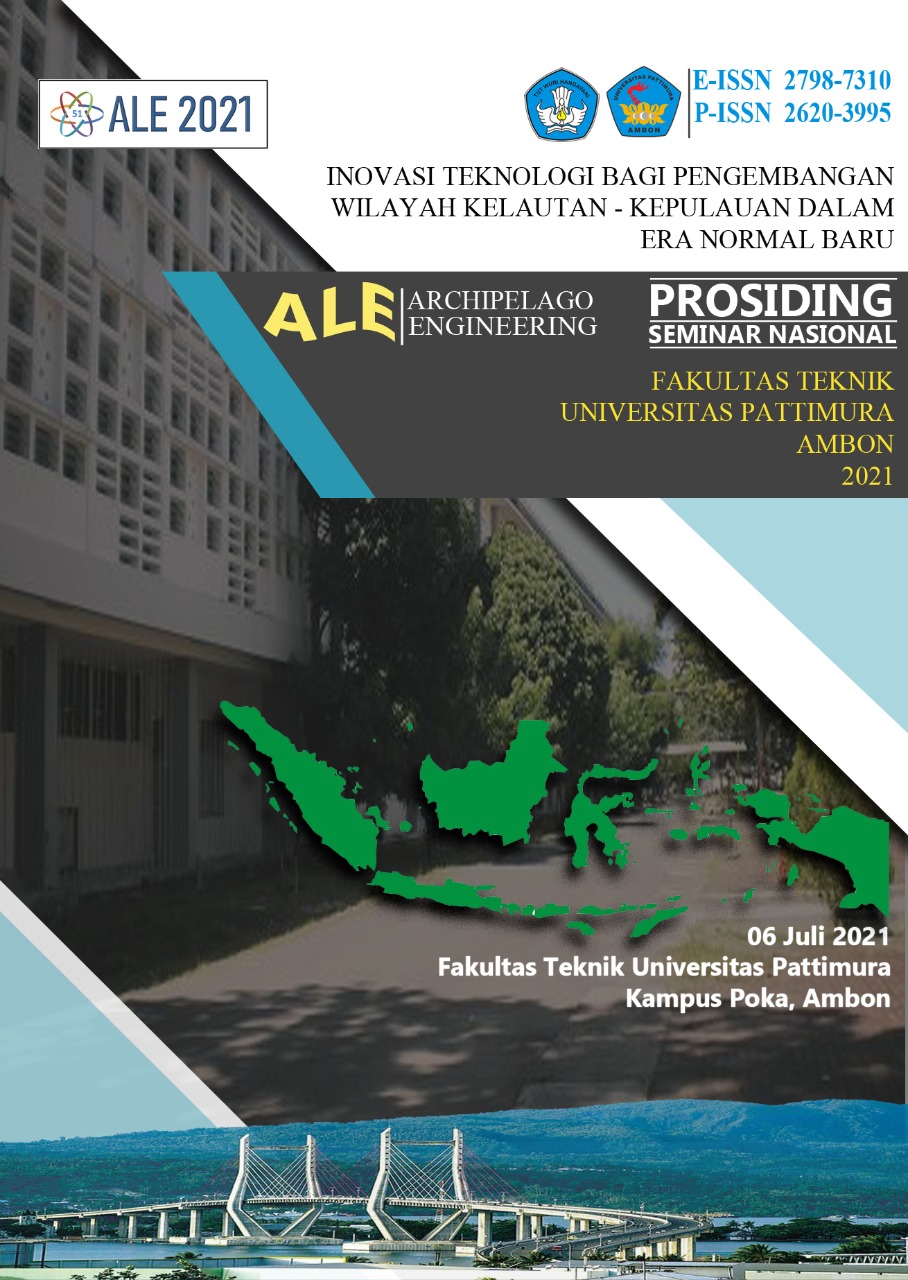ANALISIS PENGENDALIAN KOROSI PADA PERMUKAAN BASAH KAPAL-KAPAL BAJA DENGAN MENGGUNAKAN ZINK ANODA
Abstract
Zink anodes are very importantfor reducing the corrosion rate on underwater surface area of hull plates. Zink anodes are affixed to parts of the vessel that are prone to seawater corrosion. This study aims to find out how much influence the installed current has on the corrosion rate by analyzing the data on the use of zink anodes in the field and the data on the use of zink anodes as a result of calculations so that the use of strong currents installed according to the need will reduce the rate of corrosion. To see the strong influence of current on the rate of corrosion, it takes data on the corrosion rate of the last 5 years from 9 vessels and also the number of zink anodes used each year. From the graph of the results of the calculation of strong current according to the theory and the results of the use of zinc anodes on nine vessels, the results obtained it is clear that the installed current strength must meet the needs of each vessel because it will affect the decrease in corrosion rate. On vessel No.3, an excess current strength of 0.539Amp to 1,386 Amp, a decrease in corrosion rate reaching 0.0317 mm/year in the 5th year. On vessel No. 4, an excess current strength of 0.444 Amp to 1.822 Amp there is a decrease in corrosion rate reaching 0.0138 mm/year in the 5th year. On vessel No. 9, an excess strong current of 4,894 Amp to 5,793 Amp there is a decrease in corrosion rate reaching 0.0371 mm/year in the 5th year.
Downloads
References
[2] Class Guideline DNVGL-CG-0288, Corrosion Protection of Ships, Edition May 2017.
[3] Komalasari, Komalasari & Evelyn, Evelyn & Situmeang, I & Heltina, Desi. (2020). Cathodic protection on stuctures of carbon steel using sacrificial anode methode for corrosion control. IOP Conference Series: Materials Science and Engineering. 845. 012015. 10.1088/175-899X/845/1/012015.
[4] Cleophas Akintoye Loto, Roland Tolulope Loto, Abimbola Patricia Popoola, Performance evaluation of zinc anodes for cathodic protection of mild steel corrosion in HCL, Chemical Data Collections, Volume 24, 2019, 100280, ISSN 2405-8300
[5] Bambang S., Purwo J. S., Hernia S.: Analisis Kebutuhan Pemasangan Zink Anode untuk Mencegah Korosi pada Lambung Kapal General Cargo, Bina Teknika Vol 14, 2018.
[6] Ngatmin, Ngatmin & Purwanto, Helmy & Riwayati, Indah. (2019). Analisis Laju Korosi Pada Plat Baja Lambung Kapal dengan Umpan Anoda Korban Aluminium. Jurnal Ilmiah Momentum. 15. 10.36499/jim.v15i2.3085.
[7] Sunarto Sunarto, Deni Septian. (2015). Analisa Kebutuhan Anoda Korban Seng Pada Plat Bottom Kapal Di PT. Indonesia Marina Shipyard. Wahana Teknik. Vol 4 No.1.
[8] Noor Idora, M. M. Rahman, M. Ismail, W. B. Wan Nik. (2014). Effect of Zinc Coating Thickness on Corrosion Performance of Mild Steel in Atmospheric and Seawater Environment. Applied Mechanics and Materials. Vol. 554. Pp.213-217.
[9] A. A. T. Adriana, Komalasari, Drastinawati. (2018). Pengendalian Laju Korosi Baja dalam Air Laut Dengan Menggunakan Proteksi Katodik Metoda Anoda Korban. Jom FTeknik Volume 5 Edisi 2 juli s/d Desember
[10] Jeong, J. A. (2015). Cathodic Protection Effect of Reinforced Concrete Beam Specimens with Zinc Sacrificial Anode in Marine Environment. Advanced Materials Research, 1125, 345–349. https://doi.org/10.4028/www.scientific.net/amr.1125.345
[11] Trethewey, K. R. Korosi untuk Mahasiswa dan Rekayasawan. Penerbit PT Gramedia Pustaka Utama, Jakarta 1993.
Copyright (c) 2021 Sonja T. A. Lekatompessy

This work is licensed under a Creative Commons Attribution-ShareAlike 4.0 International License.
An author who publishes in the ALE Proceeding agrees to the following terms:
- Author retains the copyright and grants ALE Proceeding the right of first publication of the work simultaneously licensed under the Creative Commons Attribution-ShareAlike 4.0 License that allows others to share the work with an acknowledgment of the work's authorship and initial publication in this journal.
- Author is able to enter into separate, additional contractual arrangements for the non-exclusive distribution of the journal's published version of the work (e.g., post it to an institutional repository or publish it in a book) with the acknowledgment of its initial publication in this journal.
- Author is permitted and encouraged to post his/her work online (e.g., in institutional repositories or on their website) prior to and during the submission process, as it can lead to productive exchanges, as well as earlier and greater citation of the published work (See The Effect of Open Access).
Read more about the Creative Commons Attribution-ShareAlike 4.0 Licence here: https://creativecommons.org/licenses/by-sa/4.0/.






